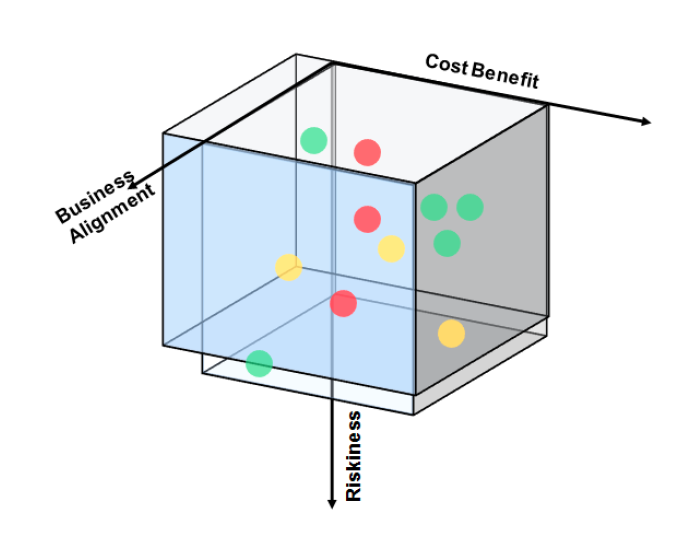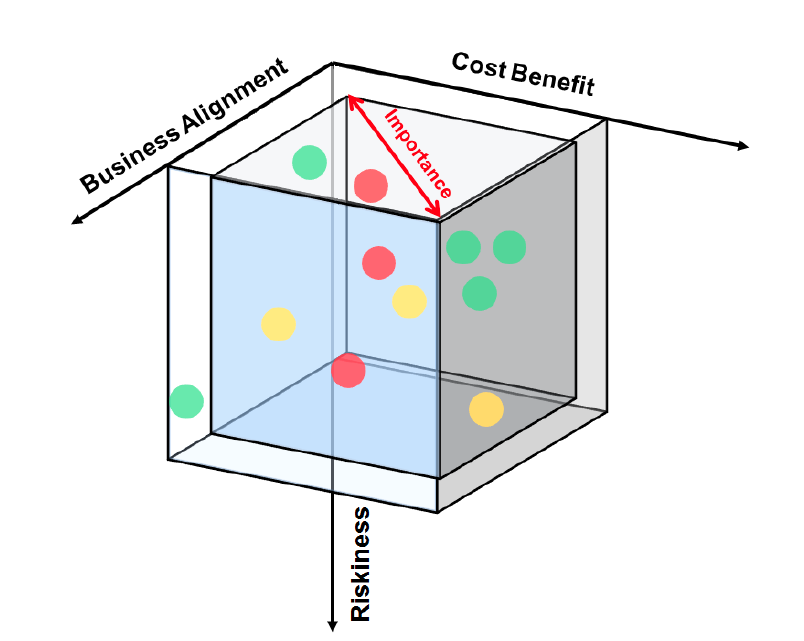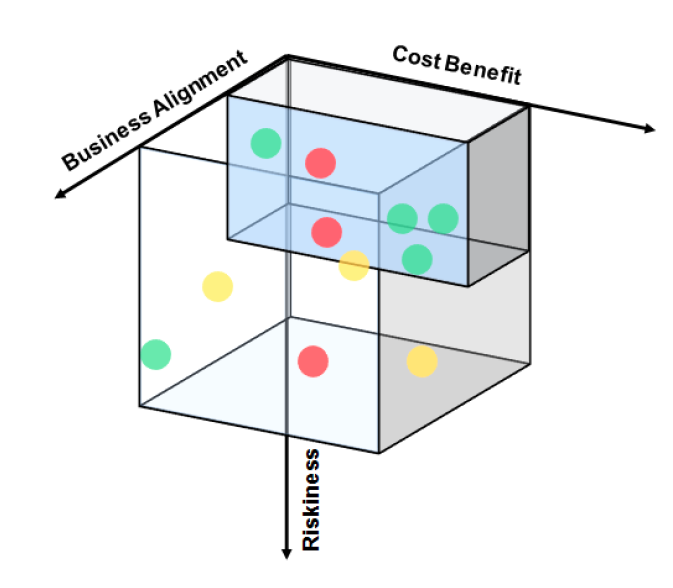Portfolio Management 101: selecting the right projects
The following graph displays each project’s score against the five criteria.
In this graph, a project’s score for Business Alignment, Cost Benefit and Riskiness determines where the project’s icon is plotted on the three dimensional plot.
A project’s Customer Alignment determines the colour used to denote a project with:
- Green dots denoting a positive perception of the organisation as a result of the project by customers;
- Amber dots denoting a neutral perception; and
- Red dots denoting a negative perception.
The other element of this graph is the shaded box, or target octant, that denotes the volume in which a project must be plotted in order to be selected for presentation to the executive committee. The size and location of this target octant depends on whether the project’s motivation is compliance, maintenance or new capability development.
Compliance
Compliance projects (above) are unlikely to have a high level of business alignment as they are externally imposed by government and/or industry bodies. Furthermore the cost benefit of such projects is also likely to be low.
 Maintenance
Maintenance
By definition, these projects (shown above) need to be undertaken as failure to do so may result in significant operational failure or major increase in operational costs.
However, this does not mean that all projects should be approved. For example, there may be essential maintenance projects whose riskiness outweighs the risk of not undertaking the project.
Accordingly, the target octant for this priority does not extend the full distance on the riskiness axis. The target octant does however extend backwards along the cost benefit axis in recognition that essential maintenance projects may cost more than the benefit that results.
 New capability
New capability
Unless an organisation is considering a totally new venture, new capability projects (above) will be aligned with the current business strategy.
Accordingly the target octant considers all projects that promise a high level of business alignment, within the limits of reasonable riskiness. Even projects with low cost benefit values are potentials provided their business alignment is high and the riskiness is low.
Under the project prioritisation process proposed in this paper, each project would be plotted in one of the three graphs according to which category it belonged to, compliance, maintenance or new capability. The executive committee would review each graph, staring with compliance projects, and approve those projects that were in the respective target octants.
The approach proposed in this paper provides a means for the selection of projects in a structured and objective manner that would lead to:
- Reduced risk, quicker starts, quicker time to market, increased confidence in investment;
- Pet or rogue projects stopped at the initial investment stage gate; and
- Business strategy proved or disproved as quickly and cheaply as possible before major investment is committed.



